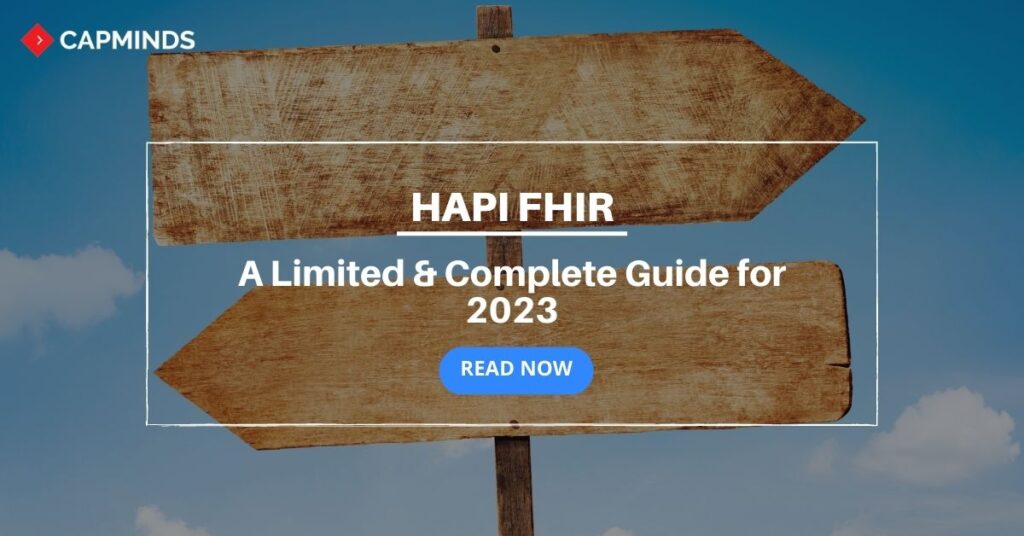HAPI FHIR: A Limited & Complete Guide for 2023
In the rapidly evolving world of healthcare technology, interoperability has become a key focus area.
With the need for seamless data exchange between different healthcare systems, Fast Healthcare Interoperability Resources (FHIR) has emerged as a prominent standard. Among the various FHIR implementations available, HAPI FHIR stands out as a powerful and versatile toolset.
In this comprehensive guide, we will delve into the intricacies of HAPI FHIR, its features, benefits, and how it enables healthcare organizations to achieve seamless data exchange.
The Unbounded Significance of FHIR
Fast Healthcare Interoperability Resources (FHIR) is a standard for exchanging healthcare information electronically.
RELATED: HAPI FHIR: Connecting Interoperability Dots for Healthcare
Developed by the Health Level Seven International (HL7) organization, FHIR leverages modern web technologies and data exchange standards to facilitate interoperability. FHIR’s modular design and focus on simplicity make it an ideal choice for healthcare interoperability initiatives.
Introduction to HAPI FHIR
HAPI FHIR, short for “HL7 Application Programming Interface (API) Fast Healthcare Interoperability Resources,” is an open-source implementation of the FHIR standard.
Built on Java, HAPI FHIR provides a robust set of tools, libraries, and APIs that simplify the development of FHIR-based applications. Its comprehensive feature set and active community support make it a popular choice among healthcare developers.
Key Features of HAPI FHIR
1. FHIR Support: HAPI FHIR supports the latest FHIR specification and provides compatibility with previous versions, ensuring smooth integration with existing systems
2. Server and Client APIs: HAPI FHIR offers server and client APIs, enabling developers to build FHIR-compliant applications that can either consume or provide healthcare data
3. Persistence: HAPI FHIR includes support for data persistence, allowing healthcare organizations to store, retrieve, and query FHIR resources efficiently
4. Terminology Services: HAPI FHIR incorporates powerful terminology services, enabling seamless integration with standard code systems, such as SNOMED CT and LOINC
5. Validation and Conversion: HAPI FHIR provides validation and conversion capabilities, ensuring the integrity and compatibility of FHIR resources
Benefits of HAPI FHIR
1. Flexibility and Extensibility: HAPI FHIR’s modular architecture allows developers to extend and customize its functionality to meet specific requirements, enabling flexibility in application development
2. Open-Source Community: HAPI FHIR benefits from an active and vibrant open-source community, which provides continuous support, bug fixes, and enhancements
3. Vendor-Neutral: HAPI FHIR’s vendor-neutral approach allows healthcare organizations to avoid lock-in to specific technology platforms, ensuring interoperability across different systems
4. Simplified Development: With its intuitive APIs and comprehensive documentation, HAPI FHIR simplifies the development process, enabling faster time-to-market for healthcare applications
Real-World Use Cases
HAPI FHIR has been successfully employed in various healthcare scenarios, such as:
1. EHR Integration
HAPI FHIR enables seamless integration of Electronic Health Record (EHR) systems, allowing the exchange of patient information across different healthcare providers
2. Mobile Health Applications
HAPI FHIR’s lightweight and scalable architecture makes it ideal for developing mobile health applications, empowering patients to access and manage their health data on the go
3. Interoperability Initiatives
HAPI FHIR plays a crucial role in interoperability initiatives, facilitating data exchange between healthcare systems, public health agencies, and research organizations
Implementation and Integration
Implementing and integrating HAPI FHIR into healthcare systems requires careful planning and execution.
Some key considerations:
1. System Architecture
Determine the architecture of your system and how HAPI FHIR will fit into it. Assess whether you need to build an FHIR server, an FHIR client, or both
2. Data Mapping
Map your existing data models to FHIR resources. Identify the data elements you need to capture and define how they will be represented in FHIR
3. Security and Privacy
Ensure that appropriate security measures, such as authentication and authorization, are implemented to protect patient data exchanged through HAPI FHIR
4. Standards Compliance
Verify that your implementation adheres to the FHIR specification and relevant healthcare standards, ensuring interoperability with other FHIR-enabled systems
5. Testing and Validation
Conduct thorough testing and validation of your HAPI FHIR implementation to ensure its functionality, performance, and compliance with healthcare regulations
Community and Resources
HAPI FHIR benefits from a vibrant and supportive community. Engaging with the community provides access to valuable resources and expertise.
Some ways to get involved:
1. Discussion Forums: Participate in HAPI FHIR discussion forums, such as the HL7 FHIR Google Group, to ask questions, share experiences, and learn from others in the community
2. Documentation: Explore the comprehensive HAPI FHIR documentation, which includes user guides, tutorials, and examples to assist you in your implementation journey
3. Open-Source Contributions: Contribute to the HAPI FHIR project by submitting bug reports, feature requests, or even code improvements. Active participation helps improve the toolset for the entire community.
4. Conferences and Events: Attend healthcare IT conferences and events where HAPI FHIR is discussed. These gatherings provide opportunities to network, learn best practices, and stay updated on the latest developments in healthcare interoperability.
Future Trends and Advancements
As healthcare technology continues to advance, HAPI FHIR is poised to evolve and adapt to emerging trends.
Some future advancements to watch for:
1. SMART on FHIR
- SMART (Substitutable Medical Apps, Reusable Technologies) on FHIR is an innovative framework that combines FHIR with web-based apps, enhancing the interoperability and usability of healthcare apps
- HAPI FHIR is expected to align with SMART on FHIR, opening up new possibilities for app development
2. Machine Learning and AI Integration
- The integration of machine learning and artificial intelligence technologies with FHIR data holds great promise for healthcare analytics, personalized medicine, and clinical decision support
- HAPI FHIR can play a crucial role in enabling such integration
3. FHIR-Based Ecosystems
- With the increasing adoption of FHIR, a vibrant ecosystem of FHIR-based applications, services, and platforms is expected to emerge
- HAPI FHIR can serve as a catalyst in fostering this ecosystem
Final Thoughts
In the quest for healthcare interoperability, HAPI FHIR offers a robust and versatile toolset for implementing the FHIR standard in healthcare applications.
Its comprehensive feature set, open-source nature, and strong community support make it a preferred choice for developers and healthcare organizations seeking interoperability. As the healthcare industry continues to prioritize interoperability, HAPI FHIR is poised to play a pivotal role in shaping the future of healthcare data exchange.
By leveraging HAPI FHIR, healthcare systems can achieve seamless data exchange, improve patient care, and unlock the potential of data-driven healthcare.
HL7 Integration Services from CapMinds
CapMinds Technologies offers the perfect all-in-one Health Interoperability solutions for your clinical needs. Our HL7 FHIR services ease the innovatory exchange to create new possibilities. Our client-centered services keep them in the limelight. Our clinical & HL7 integrations enable EHR-integrated laboratory, imaging, e-prescriptions, EPCS, pharmacy, and much more. These enhance the activation process for your individual and collective needs.
“CapMinds Technologies is the place that will make you achieve your goals by combining “Expertise+Hardwork+Commitment”
CapMinds FHIR APIs services cover your patients’ health data with the greatest security, privacy, and confidentiality. We update ourselves with the latest versions like HL7 Version 2, Version 3, HAPI FHIR, SMART on FHIR, CDA, X12, HAPI FHIR, Mirthconnect, and security standards. CapMinds offers the best HL7 integration and HL7/FHIR interface development services for the federal government, health tech startups, laboratories, clinics, and practices.
“Unite with us to get the most benefits of our HL7 integration services and rise to be the first”



